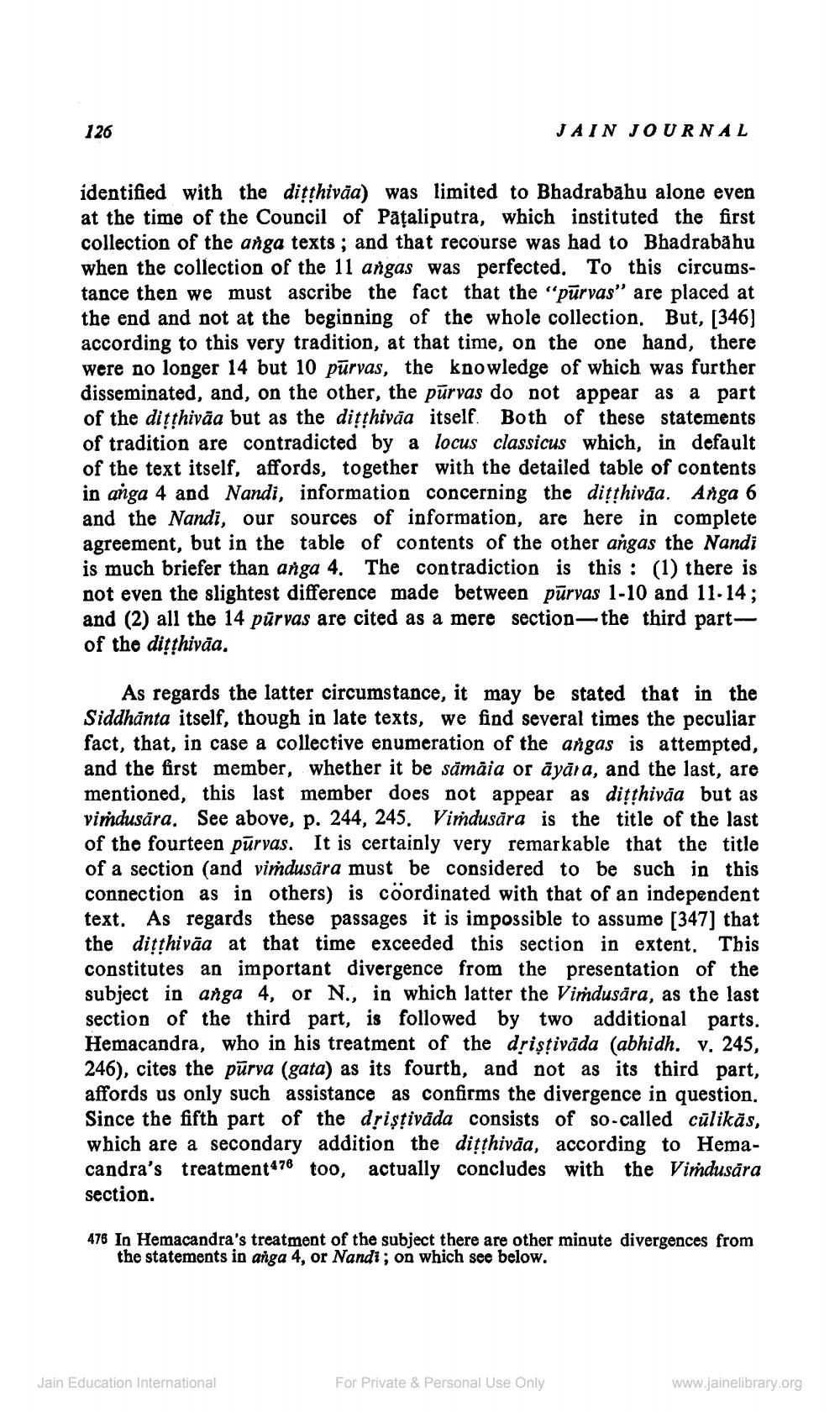________________
126
identified with the diṭṭhivaa) was limited to Bhadrabahu alone even at the time of the Council of Pațaliputra, which instituted the first collection of the anga texts; and that recourse was had to Bhadrabahu when the collection of the 11 angas was perfected. To this circumstance then we must ascribe the fact that the "purvas" are placed at the end and not at the beginning of the whole collection. But, [346] according to this very tradition, at that time, on the one hand, there were no longer 14 but 10 pūrvas, the knowledge of which was further disseminated, and, on the other, the purvas do not appear as a part of the diṭṭhivaa but as the diṭṭhivaa itself. Both of these statements of tradition are contradicted by a locus classicus which, in default of the text itself, affords, together with the detailed table of contents in anga 4 and Nandi, information concerning the diṭṭhivaa. Anga 6 and the Nandi, our sources of information, are here in complete agreement, but in the table of contents of the other angas the Nandi is much briefer than anga 4. The contradiction is this: (1) there is not even the slightest difference made between purvas 1-10 and 11.14; and (2) all the 14 pūrvas are cited as a mere section-the third partof the diṭṭhiväa.
JAIN JOURNAL
As regards the latter circumstance, it may be stated that in the Siddhanta itself, though in late texts, we find several times the peculiar fact, that, in case a collective enumeration of the angas is attempted, and the first member, whether it be sämaia or ayara, and the last, are mentioned, this last member does not appear as diṭṭhivaa but as vimdusăra. See above, p. 244, 245. Vimdusăra is the title of the last of the fourteen purvas. It is certainly very remarkable that the title of a section (and viṁdusăra must be considered to be such in this connection as in others) is coordinated with that of an independent text. As regards these passages it is impossible to assume [347] that the diṭṭhivaa at that time exceeded this section in extent. This constitutes an important divergence from the presentation of the subject in anga 4, or N., in which latter the Vimdusära, as the last section of the third part, is followed by two additional parts. Hemacandra, who in his treatment of the driṣṭivada (abhidh. v. 245, 246), cites the purva (gata) as its fourth, and not as its third part, affords us only such assistance as confirms the divergence in question. Since the fifth part of the driṣṭivada consists of so-called cūlikās, which are a secondary addition the diṭṭhivaa, according to Hemacandra's treatment476 too, actually concludes with the Vimdusăra section.
476 In Hemacandra's treatment of the subject there are other minute divergences from the statements in anga 4, or Nandi; on which see below.
Jain Education International
For Private & Personal Use Only
www.jainelibrary.org




